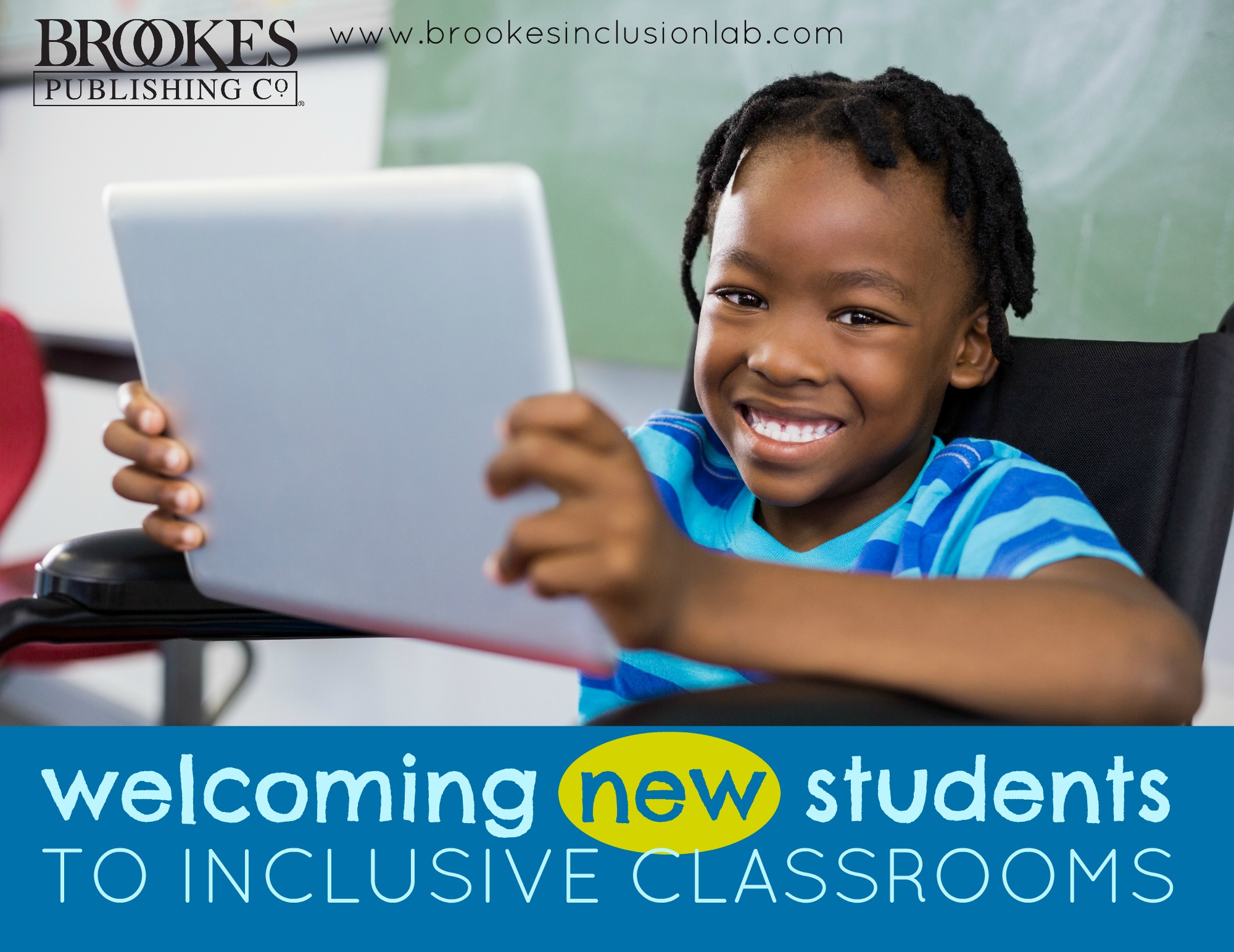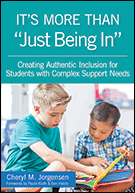Your Inclusion Transition Checklist: How to Support Students New to Inclusive Classrooms
May 1, 2018
As an inclusive educator, you’ll likely welcome some students who are making their first transition into a general education class. Whether they’re coming from a self-contained class or a separate school, they’ll need some supports and action steps from the education team to ensure a smooth transition and full membership in the classroom community.
Today’s post, excerpted and adapted from inclusion expert Cheryl Jorgensen’s upcoming book, It’s More Than “Just Being In“, outlines the key steps you and the rest of your student’s team should take before, during, and after their transition to your classroom. This handy checklist is a good resource to bookmark and share with parents, other teachers, your principal, and additional support staff to make sure you’re all on the same page.
At Least 3 Months Before the Transition
Start getting ready! Take these first important steps:
- Enlist the school principal, special education administrator, and family in support of the student’s transition.
- Use books and other professional development opportunities to brush up on key inclusion topics: accessible instructional materials, assistive technology, positive behavior supports, belonging and social relationships, sensory supports, movement supports, emotional needs, environmental adaptations, the collaborative instructional planning process, grading, and presuming competence.
- Visit other inclusive schools along with other team members.
- Have open discussions with other team members to address concerns up front.
About 2 Months Before the Transition
As the student’s transition gets closer, you should:
- Be in touch with parents. At this point (or before), parents should tell the student that they will be going to a new classroom/school and schedule a tour.
- Schedule a transition meeting between the family and all the members of the student’s IEP team.
- Write or revise the IEP to reflect inclusive goals, supports, and placement.
- Create common planning time for the team.
- Schedule special education and related services.
- Assess the classroom and other school environments for accessibility and make the necessary adaptations.
- Determine where the student will sit in the classroom.
- Order any equipment, curricula, and software you need, or prepare for its transfer when the student leaves their old placement.
- Help arrange for the student to get to school on the regular bus.
- Begin creating participation plans for upcoming units you will teach.
- Ensure that medical and safety procedures are in place.
- Continue your professional development.
The Week Before the Transition
Almost ready to welcome your new student! At this stage, make sure you’ve done the following:
- Set up the student’s desk and ensure that they have all the same materials as the other students in your classroom.
- Schedule a team meeting to discuss the first week of school.
- Ensure that supports are fully prepared for your student’s full participation on the day they arrive in your classroom.
- If the transition happens during the school year, tell your other students that a new student will be joining their classroom. Suggest specific ways they can welcome and support the new student.
The Week the Student Arrives
To celebrate the arrival of your new student:
- Do a welcoming activity with your class (with young children, you can try an activity like We All Fit Together [Friedrich, 2012]).
- Read a book about disability with your class, such as Ian’s Walk: A Story About Autism (Lears, 1998) or Just Because (Elliott, 2012). The Curious Incident of the Dog in the Night-Time (Haddon, 2003) or No Pity: Forging a New Civil Rights Period (Shapiro, 1993) can be read by older students.
- Have a brief team meeting every day at lunch or after school to discuss how things are going.
- Call the parents to share how the week went at school and ask how the student is adjusting at home.
Two Weeks After the Student Arrives
Keep the lines of communication open with the school team to make sure the transition is going smoothly. At this stage, you should:
- Schedule a team meeting to discuss how well supports are working.
- Check in with the family again to see how the student is adjusting to their new school experience.
- Work with the family to set up a social gathering outside of school for the student and a few classmates.
What strategies have you tried in your own inclusive classroom to make a new student’s transition easier? Share your suggestions in the comments below!
CHECK OUT THE BOOK
 It’s More Than “Just Being In”: Creating Authentic Inclusion for Students with Complex Support Needs
It’s More Than “Just Being In”: Creating Authentic Inclusion for Students with Complex Support Needs
By Cheryl M. Jorgensen, Ph.D.
This book is your school team’s practical blueprint for making authentic inclusion happen in K”“12 classrooms. You’ll get a clear rationale for meaningful inclusion and learn how to use strengths-based, person-centered planning to meet the needs of each individual student. Concrete, research-based examples show you what successful inclusion looks like, and ready-to-use strategies help you implement each stage of inclusion, from presuming competence to supporting the transition to adult life.




Write a Comment
Your email address will not be published. Required fields are marked *
Post a Comment